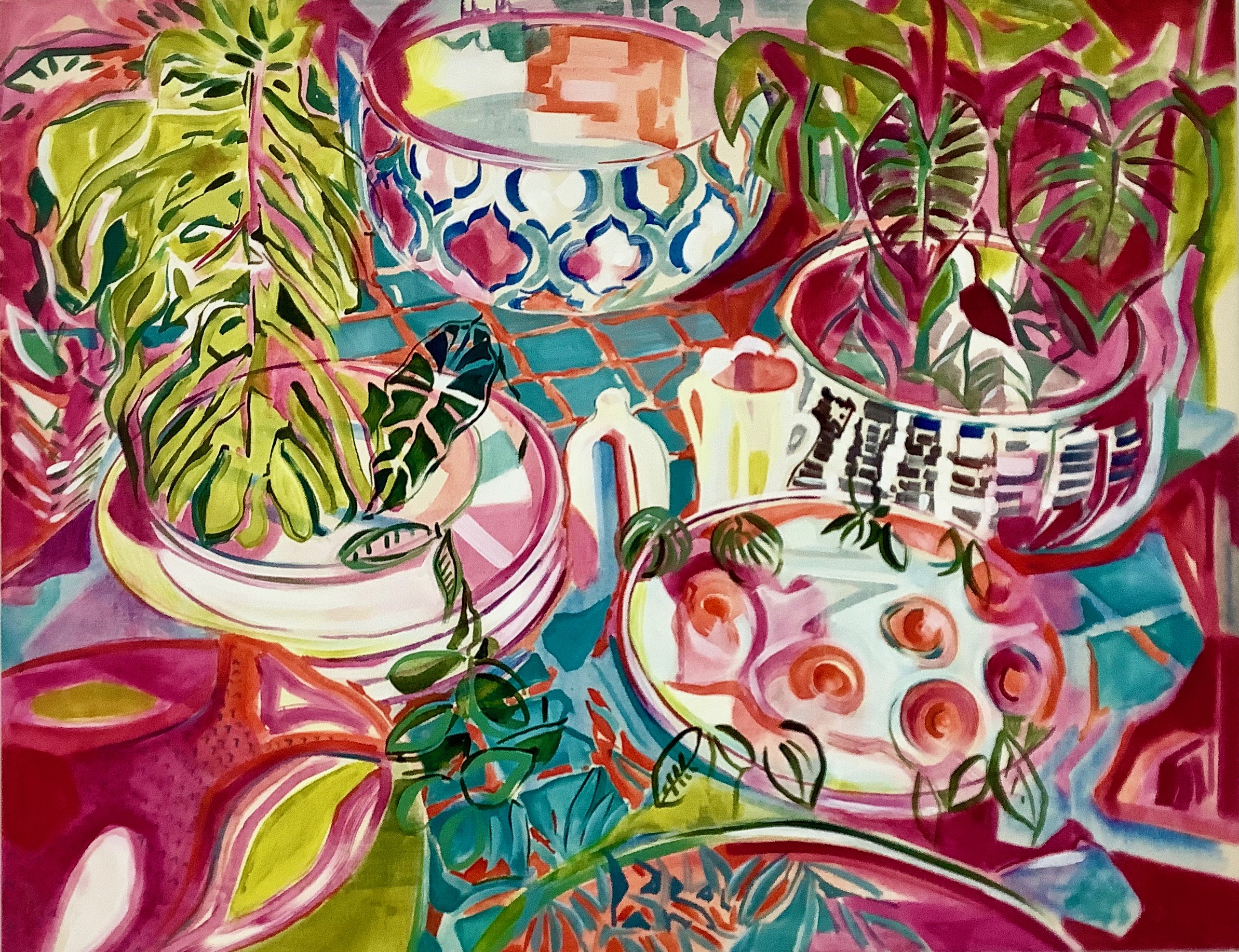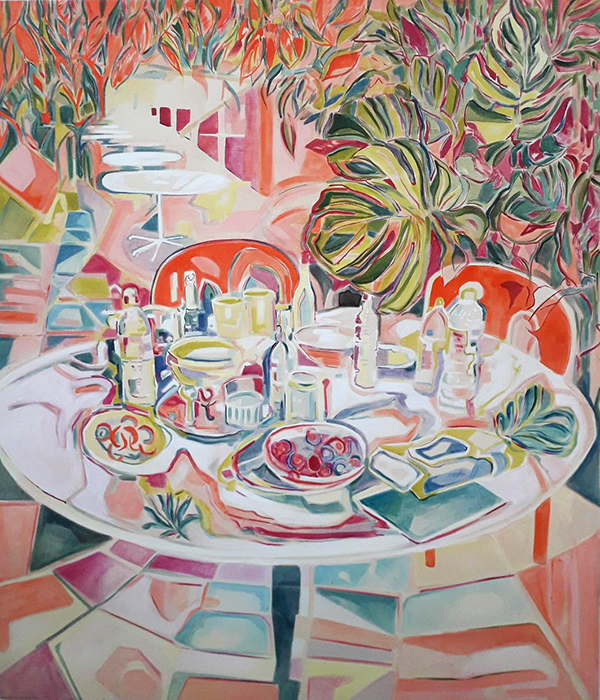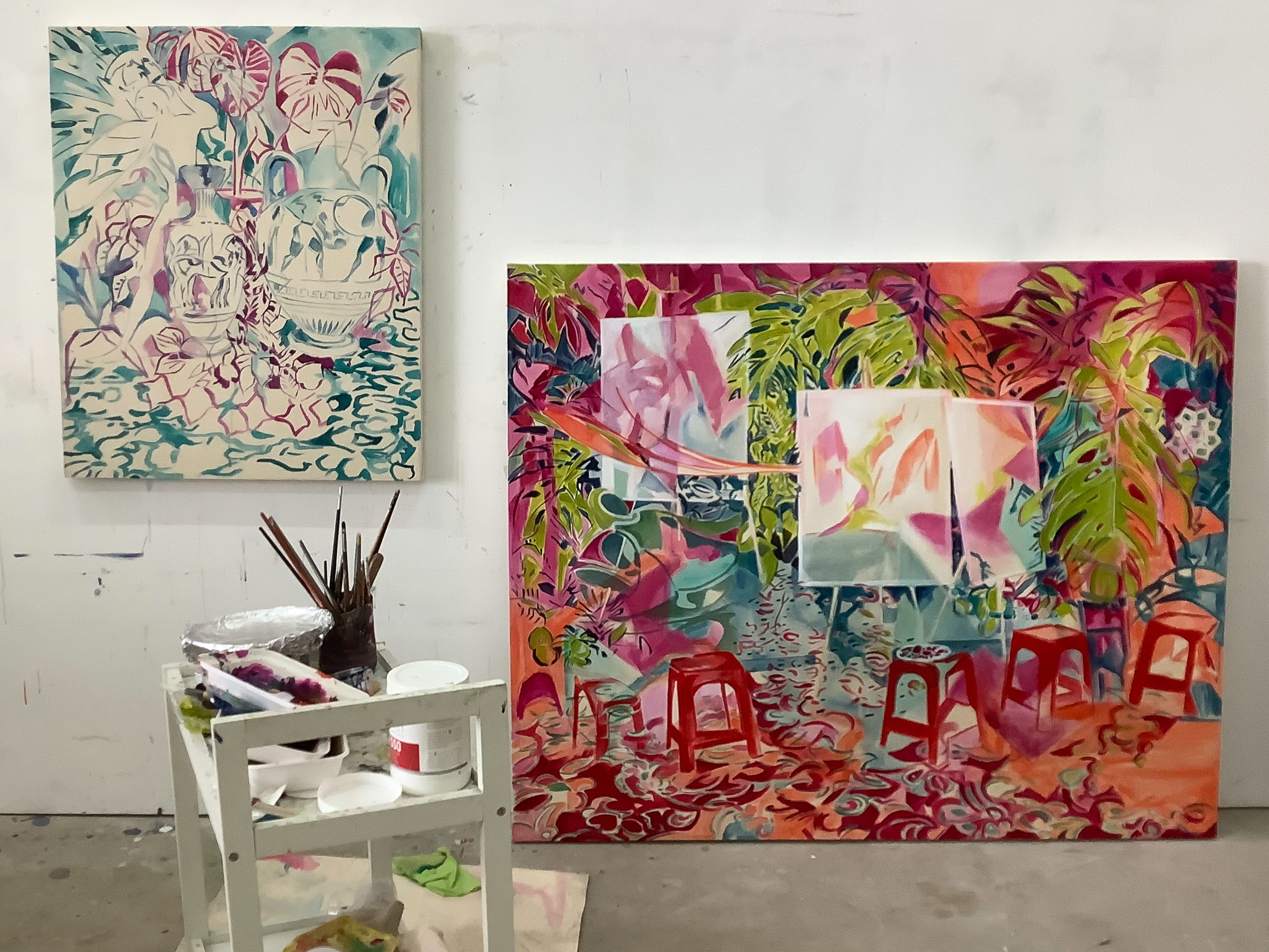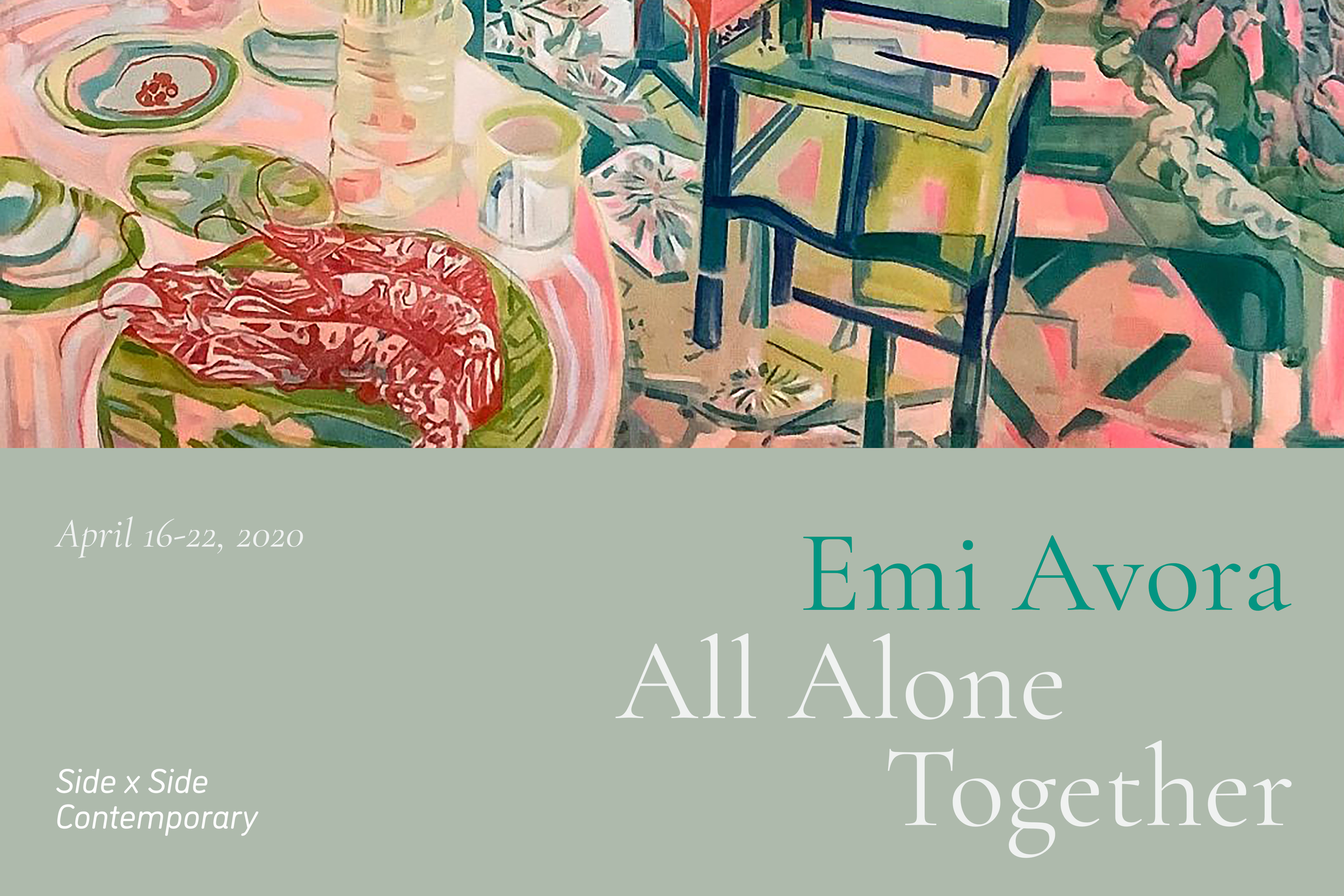Emi Avora
Interview-April 16, 2020By Side x Side Contemporary

Emi Avora (1979) is a Greek born, London trained, and Singapore based artist. She has exhibited widely in the UK and abroad. Solo projects include the National Theatre of Greece, Athens, South Square Arts Centre, The Apartment Gallery, Athens, Greenberg Van Doren Gallery, New York, and Gallery Truebenbach, Cologne. She has participated in a number of group shows including Studio Voltaire, London, The National Museum of Contemporary Art, Athens, The Whitechapel Gallery, London, and the Macedonian Museum of Contemporary Art, Thessaloniki. Her work can be found in private as well as public collections in Europe and the USA, including The Wonderful Fund collection and March collection. She has also been an Elizabeth Greenshields recipient and her work has been in various publications including ArtMaze Magazine, the New York Times, Future Now, Aesthetica Magazine and Defining the Contemporary, The Whitechapel in Association with Sotheby’s. Her work was recently included in Be.Long.Ing, an online exhibition, organized by ilikeyourworkpodcast.com, as well as featured on online platforms http://yngspc.com and www.thegreekfoundation.com
Please introduce yourself and tell us a bit about your background.
I am currently living in Singapore, grew up in Corfu, Greece and lived in London for over twenty years, where I also studied and worked. So a mix really...my husband is German and my kids (4 and 2) have already adopted the Singaporean accent! We are trying to keep up with 4 languages at home.
How did you become an artist? What's your story?
My father is a painter as well, so we always had a studio at home which I loved. I grew up with artmaking in my life. I was very lucky.
I decided to study Fine Art and despite questioning being an artist several times, I always went back to it.

Tell us about the themes and ideas that you pursue in your work.
A mix of everyday curiosity, anxiety, humor, and conversations with painting’s history are the main starting points of the work. The subject matter mainly derives from my everyday existence; the food, the greenery and the everyday observations in my current living but it is presented in a fictional way.

There seems to be a tension in your work between everyday materials and observations and the realm of the imaginary. You use objects and subject matter that seem familiar, yet the colors, lighting, and shapes are subverted. How does your work engage viewers through this familiarity/unfamiliarity?
Yes, I find one of art’s powerful tools is to create imaginary worlds, albeit parallel to our own. I love how a relatively mundane situation can become a visual journey that allows the viewer entry to another realm. And how the humble painting tools of colour, shape, composition, and pattern can allow us to transcend an ordinary observation into something extraordinary. Elements of my everyday that I find surprising and attract my attention become exaggerated or twisted. The colour is heightened and the composition is often disorienting. I guess I compose an imaginary space that derives from a familiar one.

You mention that you are interested in exploring the “ambiguous relationship to colonial narratives, exoticism, and taste.”
I have always been interested in the idea of the ‘exotic’, how we perceive it and how it has become a trend or a taste. Moving in Asia, this interest has amplified as it is clear that the image of the exotic is very much a projection. My relationship with the exotic is ambiguous as although I understand the cliché, I am also very much part of it, and I cannot avoid it. My subject matter and my choice of colours even are dictated by this ambiguity.
Can you tell us some more about the dialogue that your work makes with modern art as a contemporary artist? Are there any specific artists that you are referencing?
I admire a huge amount of painters and looking at older painting as well as contemporary painting provides continuous inspiration. I have been looking at turn of the century painting like the post-impressionists Matisse and Bonnard a lot recently. One of the artists I am also looking at currently is the Swiss Cunot Amiet. Amazing Colourist. I guess when I am making my work I am continuously at a dialogue with paintings’ history - if it’s impossible to break with history then why not use to our advantage?

What does a typical day in the studio look like for you? What is your work process?
So, under normal circumstances and not a lockdown I drop off my kids at pre-school, walk through the amazing Singapore Botanical gardens and then take the bus to the studio. My process is very organic, I am working on a few pieces at a time and if I am in between canvases I work on paper. There is usually a piece I am mainly focusing on while others are just starting or changing. I tend to work continuously regardless of an exhibition or a project. Usually, I spend the whole time I have available in the studio (no real lunch break, etc.) as I need to get back by 4 for pre-school pick-up. So, I don’t have the luxury of lingering on. However, I do dedicate days to go and see exhibitions, walk around in the neighborhood or walk in nature. My days outside the studio are as important as the ones there as that’s when I gather ideas for my work.


What limitations and barriers do you face as an artist? What are your goals as you move forward in your artistic career?
Having the children has been quite a challenge as the usual ways of connecting with other artists at private views or going for drinks etc. were (and still) aren’t possible any longer. Basically 6 to 8 pm which is the time where all socializing is happening is the time when parents need to be at home to take care of their kids. I felt this left me quite isolated. However, things are changing for the better for artists that are parents as there are many more platforms (like your!) now that understand these limitations and try to create opportunities.
The other challenge has been that moving to Singapore about a year and a half ago, I had to reorganize my studio, re-establish my practice and make new connections from scratch. It has been very inspiring, but it still feels a new beginning.
What’s next? Do you have anything coming up soon?
Pretty much everything has been halted because of the current COVID-19 situation everywhere in the world but I am hoping some plans will materialize probably after the summer.
*For more info on Emi’s work please visit her website & Instagram
*You can see Emi Avora’s exhibition here.

Images © 2020 Emi Avora
Interview by:
Side x Side Contemporary
Mana Mehrabian & Krista brand